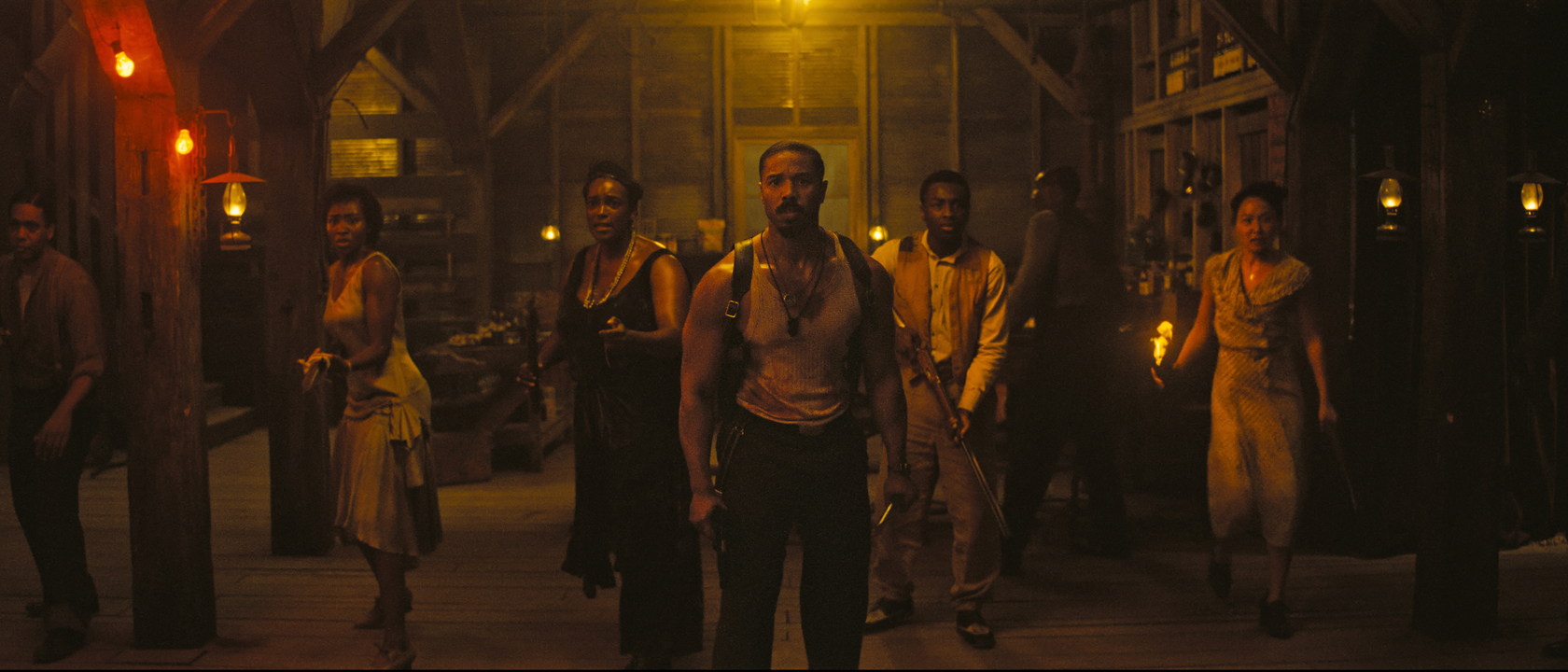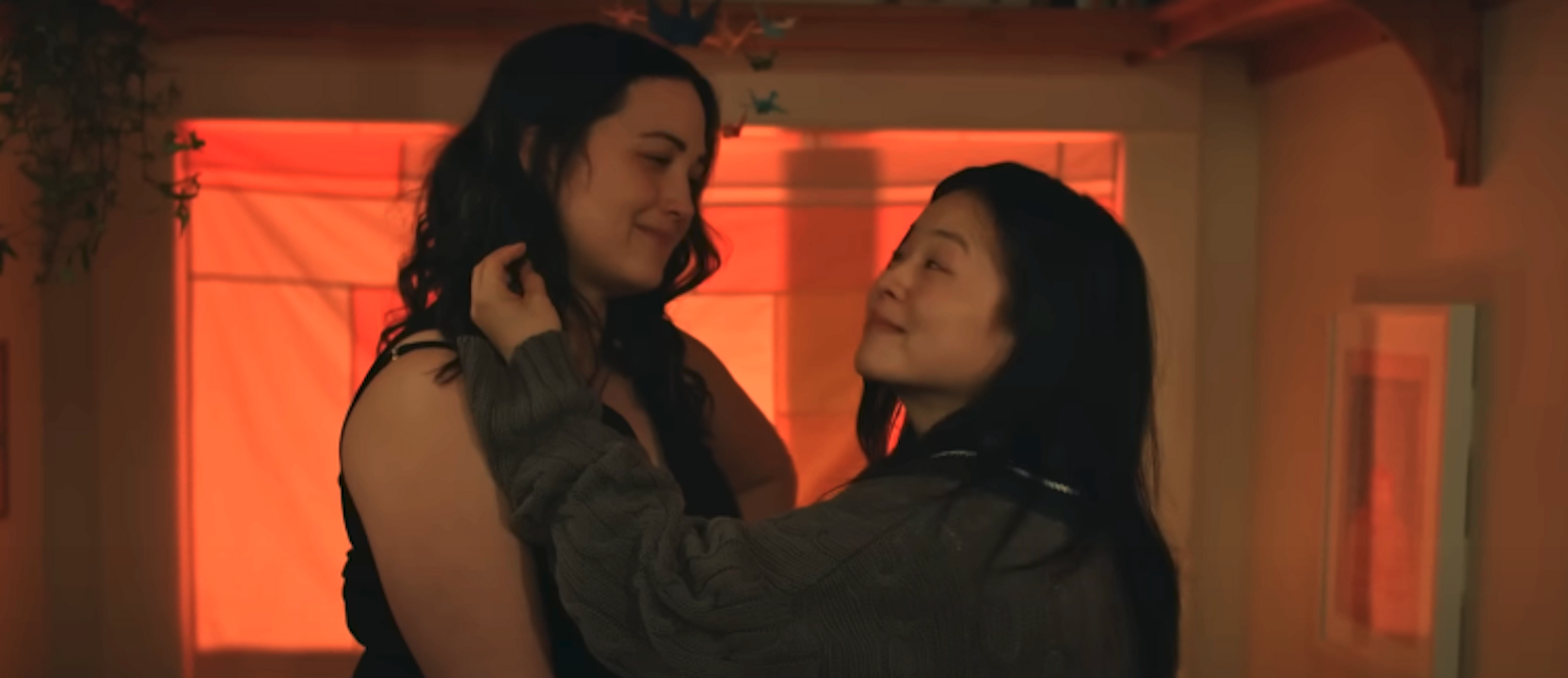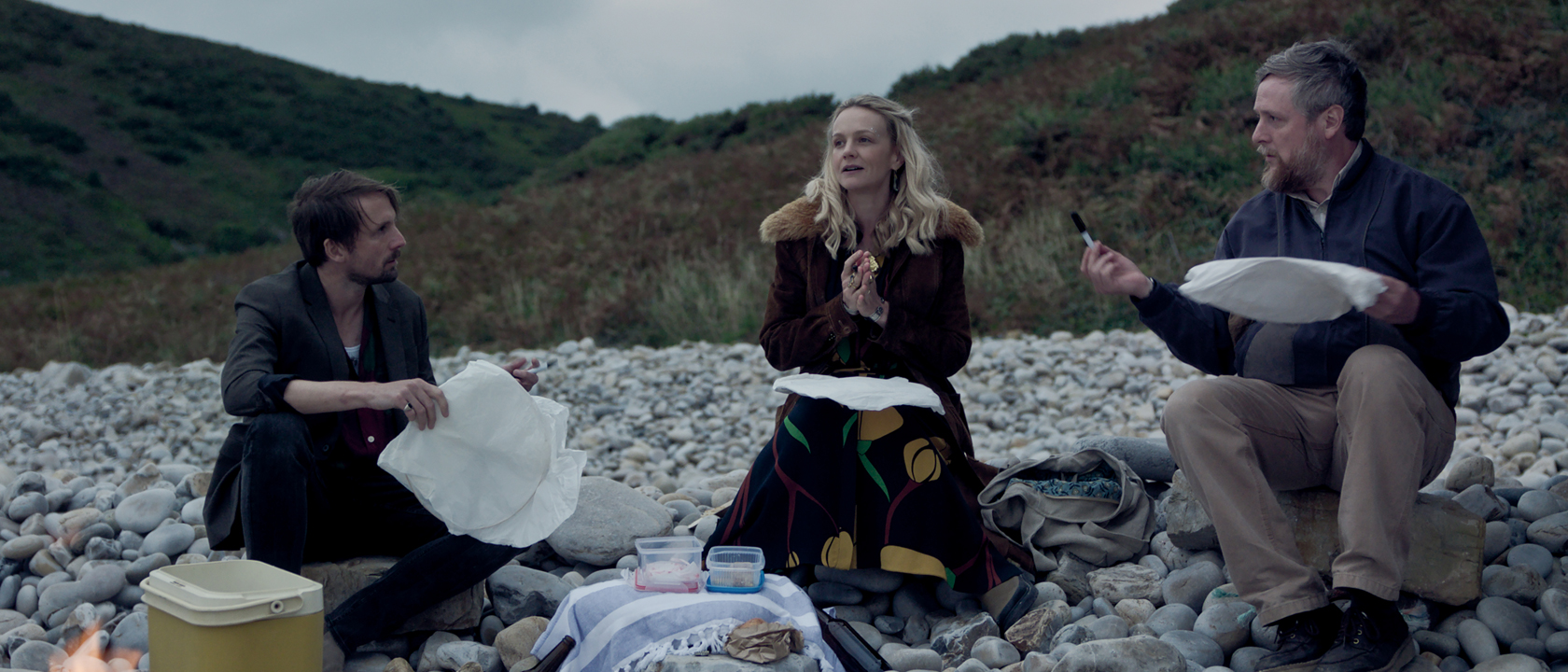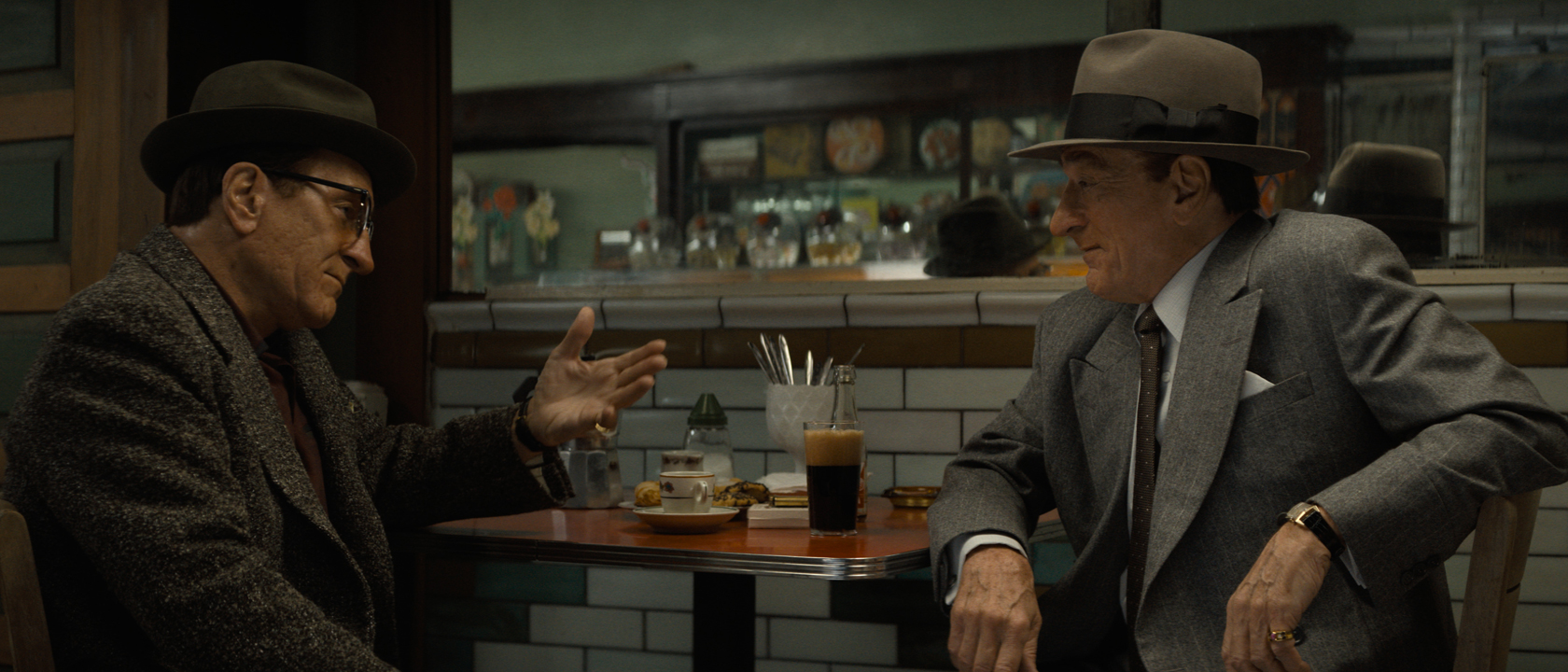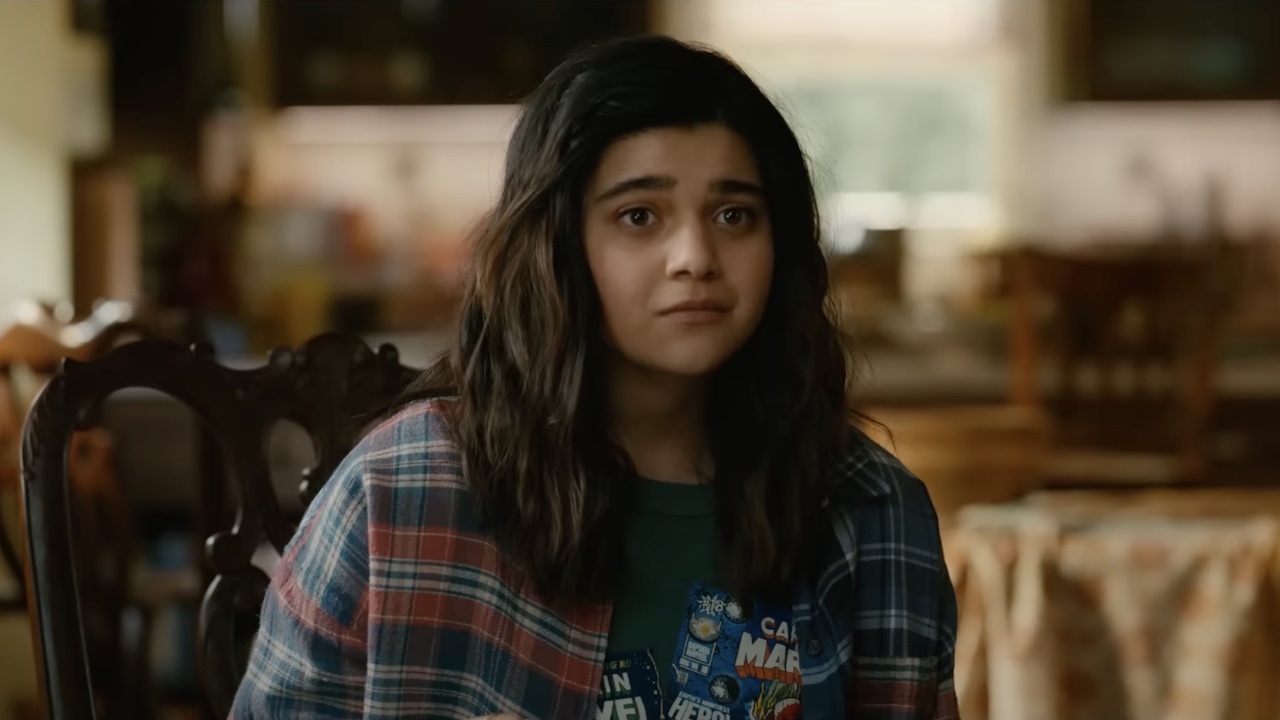Director Sandy Collora and co-writer Nick Damon take us to the stars on a budget, proving that you don't have to have a huge studio backing your imagination to tell a ripping science fiction yarn. While Hunter Prey has its weak points, it's hard not to admire the vision and ambition on display in this old-school tale of...well, hunters and his prey. Hunter Prey opens with a brief shot of the tranquility of space, a planet looming on one side of the screen. That peace is soon shattered as a cluster of debris tumbles into view, drawn inexorably down toward the surface. It's a clever and effective opening, telling us everything we need to know without having to provide an elaborate crash sequence that the production almost certainly doesn't have the budget for. From there, we zip straight to the aftermath: three armed and armored crew members awakening in the wreckage of their ship. We learn that their ship was transporting a prisoner, the last of its species, and that it has now escaped onto the barren surface of the desert world. As shots ring out from the distance, it becomes clear that not only has the prisoner escaped, but it has no intention of being recaptured. As the battered survivors set off across the sands in search of their quarry, it soon comes down to two last men standing, a game of cat and mouse between the hunter and the prey. Where things get interesting, however, is in the true identity of the prisoner...and in the cagey motivations of them both.
Throughout his commentary and the behind-the-scenes material, director Sandy Collora throws around some weighty names when listing his inspirations for Hunter Prey. Names like David Lean, and genre classics such as Planet of the Apes and the original Star Wars. That's a bold check to write, but regardless of whatever ego might be on display, the fruit of those influences is at least easy to see. Collora shoots the deserts of Mexico which are standing in for his alien world in lingering wide shots, playing up the contrast of two tiny figures treading across the endless wastes. It gives Hunter Prey a sense of scale that makes up for the indie-level budget, relying on mother nature to provide the elements they can't afford to pay for. And while Hunter Prey may not be entering the canon alongside the SF classics it pays tribute to, it is a spiritual successor in look, feel, and approach. Practical effects and physical costumes rule the day here, a refreshing change in an era where cheaper CGI has made that the go-to tool of even low-budget productions. It's an approach that shouldn't be surprising considering the director. If Collora's name sounds familiar, it's because he made the impressive Batman: Dead End short that made the rounds online a few years back (in fact, his Batman, Clark Bartram, serves as one of Hunter Prey's two leads). The costume and make-up work on display here is top notch for an indie production, with impressive levels of detail and a sense of weathering and use that makes them feel more real and less like something dragged off the shelves of a studio prop department. In fact, all these physical elements are so well done that the few uses of CGI look a bit shoddy in comparison.
This lo-fi approach to filming also extends to the story itself, with Hunter Prey unfolding essentially as a modern spin on the trope of a thousand Westerns: one man pursuing another. Once it might have been the sheriff and his posse trying to bring the outlaw back to town for a necktie party. Here, it's Centauri 7 (Damion Poitier) chasing down Jericho (Bartram), the mysterious figure who has threatened to destroy Centauri's whole world. This pursuit is livened up and given an added level of tension by two narrative conceits. One is a ticking clock in the form of a countdown until more of Centauri 7's people arrive to rescue him and recapture Jericho. The other is in an ongoing conversation between the two men once Jericho swipes a communications earpiece off of one of Centauri's dead companions. This provides a means for character interaction in a film where the two are rarely near each other, as well as the medium for the unfolding of the story's key mystery: just who Jericho is, and what he's really planning. I won't spoil any of that, but suffice to say the script does its best to keep you guessing all the way to the end. Props must also be given to the unforgettable moment when Jericho removes his breather helmet and we first get a good look at him. It's a powerful reveal from a story standpoint, and it's made all the more impactful by Collora's staging and a particularly impressive display of suppressed gag reflex on Bartram's part.
Hunter Prey does have its failings, however. While it is consistently impressive visually and it makes the most of every budget dollar, the dialogue is often shaky. Both of the lead actors give it their all, but with so much of their back-and-forth hinging on large questions of morality, vengeance, and the like, the film occasionally teeters on the edge of doing too much tell and not enough show. Eyebrows may also be raised by the film's conclusion. While it's clear why one character is supposed to do something, the magnitude of his decision makes the choice seem a bit pat and far-fetched. It doesn't quite feel earned. Still, there's so much passion on display throughout the film, it's easy to forgive the weaknesses of the script. With so much Hollywood science fiction trafficking in proven formulas at the expense of imagination, wonder, and a genuine love of the genre, it's great to see a low-budget filmmaker using SF trappings to do what the field has always been best at: telling a human story through the metaphoric lens of a galaxy far, far away. While Hunter Prey only has two bonus features, both provide plenty of meat for fans of the film and especially for aspiring filmmakers who want to take away some pointers.
First up, Collora provides a full-length director's commentary that delves into just about every aspect of the film you could hope to know about. He talks about the origins of the project, about finding just the right location to serve as their alien desert, about how most of the cast became involved, and about the challenges of a grueling shoot in triple-digit heat. Collora is engaging enough, and his reminiscences are detailed enough to be useful to any young filmmakers taking notes in the audience. This was clearly a movie he was excited to make, and that carries over to his commentary.
If there's anything you were curious about that isn't covered in the commentary, chances are you'll find what you're looking for in the half-hour "making of" segment. The featurette includes interviews with damn near everyone involved in the production, and gives brief looks at the various elements that went into Hunter Prey. You'll get plenty of behind-the-scenes looks at early sketches and props at various stages of completion, a discussion of the film's score, and even a demonstration of why necessity really is the mother of invention in filmmaking as those involved explain how they transformed a dumpster into a buried starship hangar. There's even a lengthy discussion of "that shot" (you'll know the one I mean after you watch the movie).
Joy Behar Thinks The View Hosts Right Now Are Very Nice, But Says That Hasn't Been True All '28 Years' Of The Show
While We Wait For Iman Vellani’s Ms. Marvel Return, I’m Jazzed She’s Joining An Upcoming Movie’s All-Star Cast That Includes Seth Rogen, Woody Harrelson And More
St. Denis Medical Boss And Star Share The Story Behind Josh Lawson's Wild Dance Number, And I'm Sold Ahead Of The Finale

